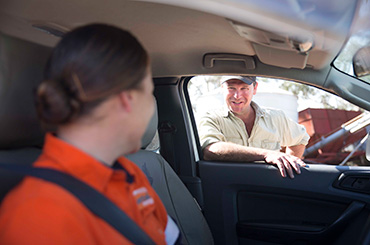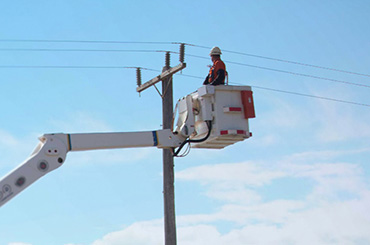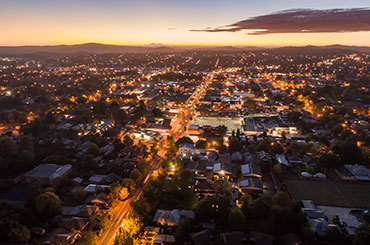Safety news

05 September 2023
Stuck in a communications blackspot earlier this year on the north coast of NSW, an Essential Energy technician had a problem faced by many of his colleagues working in the field.
Robert Allen, a senior technician from Grafton said “I was in the middle of nowhere and needed email access to complete the job, but I had no coverage. I was in all sorts of bother. I had to head three to four kilometres away to get a connection, send the email and then drive back to the job. It’s a painful process when you have to do it a few times a day.”
It’s a familiar challenge for crews working on Essential Energy’s electricity distribution network, which stretches more than 180,000 kilometres across the remote areas of the State from the sub-tropical regions in the north to the semi-arid plains of the Far West and the snowy peaks of the Australian Alps.
But thanks to a pilot project with Starlink, Essential Energy is enhancing communications coverage for its crews in areas that were previously blackspots.
Starlink, a satellite constellation that orbits Earth, provides an alternative communications option for people and businesses where distance and terrain make it difficult to secure reliable connectivity from existing copper, fixed wireless and mobile networks. In large parts of the Essential Energy footprint, this is the everyday reality.
Operated by SpaceX, Starlink is a US company founded by billionaire entrepreneur Elon Musk. The technology not only provides internet access but also supports wi-fi calling to enable Essential Energy crews to make voice calls in locations where there is no mobile network coverage.
Essential Energy’s pilot program included Starlink technology fitted to the roof of field crew vehicles and portable devices that can be quickly set up in remote locations.
Essential Energy Chief Operating Officer Luke Jenner said initial feedback from the pilot program was overwhelmingly positive. While final testing is continuing, Essential Energy was progressing plans to roll out the technology for up to 100 vehicles in the fleet.
“This initiative will improve connectivity for our teams working in the more remote areas of the State. It means we can work anywhere, not just where we have coverage. Starlink provides broadband wherever our people are, making our teams more efficient and helping them stay in touch with control rooms and to use the field portal and other apps in any location.”
This sentiment is supported by Mr Allen, who confirmed he sets up the portable devices in less than five minutes.
“It’s changed the way we do business here. It gives us full access to everything and has transformed the way I work. It’s genius.”
Starlink’s 4000-plus satellites use a relatively low orbit trajectory of 550 kilometres, which helps improve the quality of coverage provided on the ground. The service provides for unlimited internet with consistent high speeds of up 200Mbps, five times faster than competitors.



